Join More Than 50,000+ Subscribers and get latest camera news and rumors
NEW CAMERA VIDEOS ON YOUTUBE
|
By admin, on October 27th, 2013
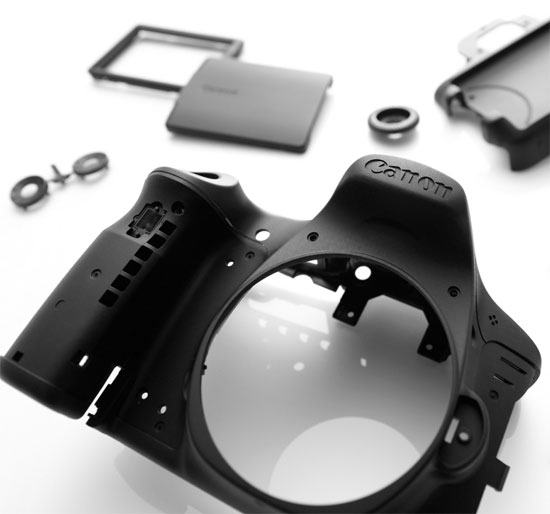
2012 was a bit dull year for Canon if we look at Sony, Fuji and Nikon products and we strongly hope that canon will recover from its slow move in 2014, I have created the list based on rumor I read daily in my mailbox and other websites worldwide, The list not only include those camera that we want to see, but the list contains the ones we believe that Canon need to get out as those models as soon as possible.
# 1 Canon 7D Mark II – The APS-C King
We know that Canon 7D suffered from a major firmware update last year but we also know that EOS 7D is now Canon’s oldest current DSLR waiting for its successor, I Still remember Canon 7D announced in September 2009 and it’s long overdue for a refresh. Take a look at the 7D Mk II rumored specification below
Rumored 7D Mark II Specification
20 OR 24 MP Dual Pixel CMOS AF Sensor
ISO 50-51200
61-Point High Density AF
Continuous shooting speed of 10-12 fps
Introduction of Dual Digic V+ in an APS-C body
Touch Display
Built in WiFi and GPS
Price around $2000
We already said that Canon will announce 7D Mk II on Q1 of 2014, probably on Feb or March 2014.
#2 APS-C fixed-lens compact
The time has come that Canon must announce a APS-C lens compact camera, If we look at competitors we have FujiX100S, Nikon coolpix A, Sony RX1R (FF Camera) and Ricoh GR…They are few step ahead from Canon.
We have seem a specification of Canon APS-C compact here, also see -> Canon large sensor compact surfaced over Canon France however later Canon france denied APS-C compact rumor.
- 18 MP APS-C sensor
- DIGIC 6 image processor
- 9 point Hybrid AF system
#3 Canon PowerShot G2 X
Canon 1.5 inch G1X look big and Bulky and almost 2 year old now + Canon users are buying Sony RX100, Nikon coolpix A, Fuji X100 / S and RX1 R as secondary camera. We hope that Canon will announce Its G2X replacement very soon.
#4 Canon Medium Format: We know that Canon is working on Medium Format camera and but they will not announce it until the new system is fully developed with Big bunch of High Quality Lenses, however the rumored date of new system announcement is Photokina 2014.
#5 Canon New Mirrorless Camera – EOS M II
Canon EOS M2 is almost ready, Canon is probably waiting to clear the stock of Canon EOS M camera, according to rumors 2 New EOS M is coming, the first one is a entry level mirrorless camera and seconf is a High-End mirrorless camera with advance features.
#6 Canon SX60 HS – High Zoom Camera
Canon SX 50HS is due for update and people are moving towards Panasonic FZ70 camera (60X zoom camera | also see SX50HS vs FZ70), we have high hopes and the next schedule announcement of Canon products is Feb and March 2013. See some rumors > Confirmed EOS M2 is Coming |
See more Canon Rumor
If you have some extra time – Also see
Nikon cameras we’d like to see in 2014
Sony cameras we’d like to see in 2014
By admin, on October 25th, 2013
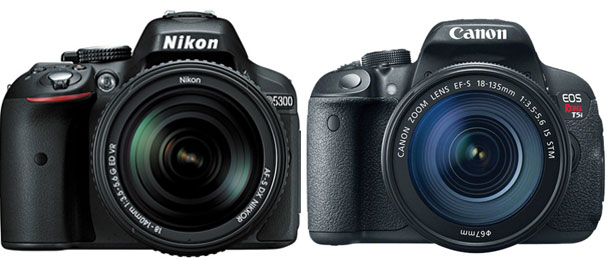 Nikon D5300 vs Canon 700D specification comparison review, Nikon D5300 features bit bigger sensor + More resolution compared to 700D / T5i, take a look at the detailed specification comparison review below. Nikon D5300 vs Canon 700D specification comparison review, Nikon D5300 features bit bigger sensor + More resolution compared to 700D / T5i, take a look at the detailed specification comparison review below.
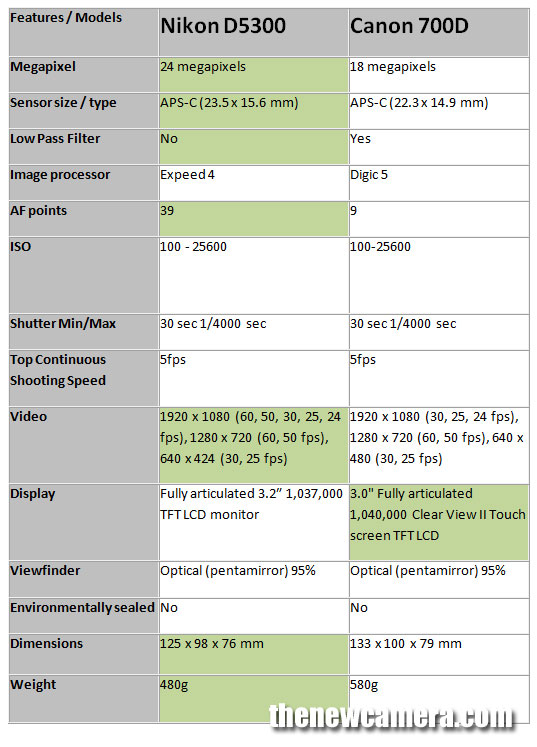
Take a look at the Major difference we found…
#1 Sensor: Nikon D5300 features 24.2 megapixel DX-format CMOS sensor same sensor as Nikon D7100 DSLR and we have seen the image quality of Nikon D7100 is excellent compared to 700D.
+ Nikon introduced a new Expeed 4 image processor with D5300, So D5300 features No optical Low-Pass filter + advance image processor compared to D7100, Nikon D5300 is a clear winner in-terms of image quality.
#2: No OPLF in D5300: The sensor design omits the traditional optical low-pass filter in order to gain the utmost sharpness and resolution from both photos and videos.
#3: AF System: Nikon D5300 features advance Phase AF system, Nikon D5300 have 39-point autofocus system, with nine cross-type sensors. Canon 700D comes with 9-point all cross-type AF system (including a high-precision dual-cross f/2.8 center point).
#4: Fast AF in Live-view & Video mode with 700D – Canon 700D newly developed Hybrid CMOS AF System is utilizes two different kinds of AF-phase and contrast detection technology, hence you get quick AF during live-view mode & in video mode, Nikon D5300 uses Contrast based AF system only in Video and live-view mode.
#5:Video: Nikon D5300 features Full HD recording @ 60fps on the other hand Canon 700D limited to 30fps at Full HD mode.
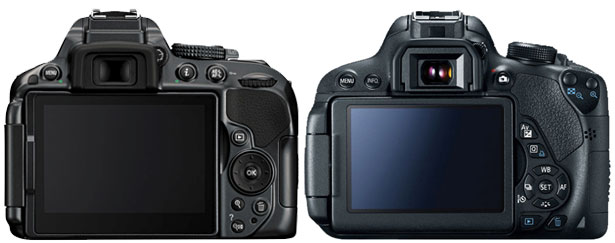
#6: Display: Canon 700D features better Touchscreen LCD with 1,040k-dot resolution, it also includes Touch Autofocus, Nikon D5300 comes with 3.2″ 1,037k-Dot Vari-Angle LCD Monitor.
# Others: Nikon D5300 features built-in Wi-Fi and GPS modules, Nikon D5300 features built in HDR capture that combines tonal and exposure range of a single image by recording two separate exposures and blending them together.
Verdict: Nikon D5300 core specification is better compared to 700D, Nikon D5300 gives you better image quality and advance Phase AF system, we recommend you to buy Nikon D5300 DSLR.
Buy / Pre-order Nikon D5300 from Amazon | B&H
Buy Canon 700D from Amazon US | Amazon UK
By admin, on October 20th, 2013
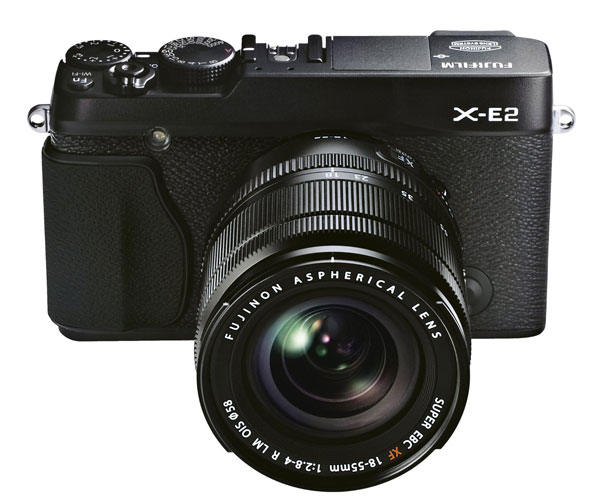 Fuji X-E2 Samples are available now. as we all know that X-E2 features same sensor as Fuji X100S camera so nothing to dig more here, we will soon publish the specification comparison with other models, Fuji X-E2 Samples are available now. as we all know that X-E2 features same sensor as Fuji X100S camera so nothing to dig more here, we will soon publish the specification comparison with other models,
Fuji X-E2 official sample images – Here
Fuji X-E2 Samples captured by Rico – at Flickr
See more about Fujifilm X-E2
By admin, on October 19th, 2013
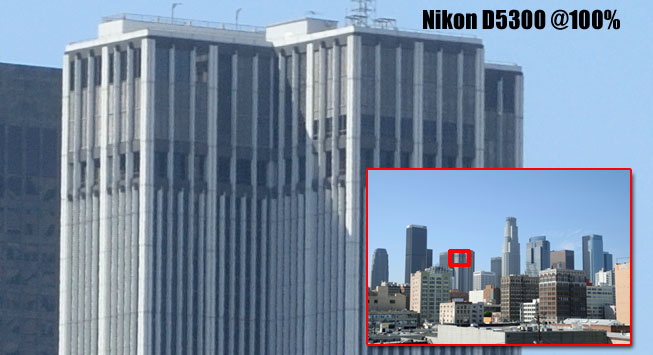 Nikon D5300 recently announced by Nikon, the Nikon D5300 features same sensor as Nikon D7100 sensor + no OPLF (optical Low-Pass Filter), as a result the images will be super sharp even when viewed at 100%. Nikon D5300 recently announced by Nikon, the Nikon D5300 features same sensor as Nikon D7100 sensor + no OPLF (optical Low-Pass Filter), as a result the images will be super sharp even when viewed at 100%.
Nikon D5300 Samples Gallery
Nikon D5300 Samples at Nikon USA website
Also see – Nikon D5300 Price, Press Release Full Specification and Videos
Nikon D5300 Price – $795 body only – Buy / Pre-order from Amazon | B&H
By admin, on October 18th, 2013
 The Fujifilm X-E2 announced today and features same sensor as X100S camera / 16MP X-Trans CMOS II sensor with EXR Processor II advance Phase + contrast detection based AF system, according to Fujifilm X-E2 features world fastest AF speed of 0.08 seconds, the X-E2 doesn’t have optical low pass filter, so you get high resolution images with excellent color and contrast. The Fujifilm X-E2 announced today and features same sensor as X100S camera / 16MP X-Trans CMOS II sensor with EXR Processor II advance Phase + contrast detection based AF system, according to Fujifilm X-E2 features world fastest AF speed of 0.08 seconds, the X-E2 doesn’t have optical low pass filter, so you get high resolution images with excellent color and contrast.
Fujifilm X-E2 Major Features
- 16.3MP, APS-C, X-Trans II CMOS Sensor
- EXR Processor II
- 3.0″ 1,040k-Dot LCD Monitor
- 0.5″ 2,360k-Dot OLED Viewfinder
- Full HD 1080p Video Recording at 60 fps
- Built-In Wi-Fi Connectivity
- Continuous Shooting up to 7 fps
- Intelligent Hybrid AF System
- Digital Split Image and Focus Peaking
- Film Simulation and Advanced Filters
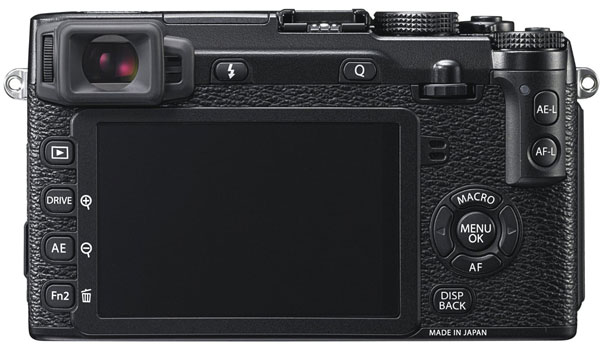
other new features added to fuji is Lens Modulation Optimizer (LMO) it work to deliver edge-to-edge image quality with incredible sharpness, the X-E2 shoots Full HD video (1920×1080) up to 60fps and the AF tracking performance in movie mode has been improved with good focusing speed, accuracy and smoothness on the rear side we also have 3-inch (1.04 million dot) premium clear LCD (High contrast, High Brightness and Wide viewing angle).
Fujifilm X-E2 Price – $999.00 [body only] – Pre-order Fujifilm X-E2 from Amazon | B&H
Main features of the FUJIFILM X-E2
Building on the global success of the highly acclaimed FUJIFILM X-E1 — awarded 2013′s Best Expert CSC by the Technical Image Press Association — the X-E2 takes image quality to a dynamic new level that is comparable with full-frame cameras. It delivers even more beautiful color reproduction, higher definition image capture, and that world’s fastest AF speed of 0.08 seconds**.
This is achieved by more than doubling the processing speed*** of the EXR Processor II. It is able to harness the information taken from over 100,000 phase detection pixels incorporated in the X-Trans CMOS II. The hybrid AF also combines phase detection AF and contrast AF to ensure accuracy when shooting low-contrast subjects and dark scenes.
The 16.3 million pixels APS-C sized X-Trans CMOS II Sensor incorporates an original color filter array. This eliminates the need for an optical low pass filter that typically minimizes moiré but does so at the expense of resolution. Instead, the X-Trans CMOS II sensor can capture unfiltered light from the lens for an unprecedented level of image clarity.
Quality is further improved by the Lens Modulation Optimizer (LMO). Its high-precision processing of the various lens parameters, as well as data from the screen centre to the edges, corrects diffraction blur when shooting with a stopped down aperture and compensates for the slight blurring in the lens periphery. The result is edge-to-edge image quality with incredible sharpness. LMO will be compatible with every XF lens.
The X-E2′s prestigious feel continues with the combination of aperture ring on the lens and shutter dial on the top of the body as seen in its predecessor. This allows full shooting control while keeping your eye to the viewfinder. The X-E2 is available in solid black or two-tone black and silver.
Fast and accurate focusing
Thanks to the X-E2′s ultra-fast response you won’t miss a photo opportunity. In addition to achieving a world’s fastest AF, the X-E2 has a rapid startup time (0.5 seconds*4), virtually no shutter lag (0.05 seconds), and high-speed continuous shooting of 7.0 fps (up to approx. 28 frames)*5.
Accurate and comfortable focusing comes courtesy of the hybrid AF. It combines a contrast AF that is strong in low light situations and a phase detection AF that provides high speed response and the camera automatically switches between the two AF modes. With the improvement of the detection algorithm, it’s easier than ever to focus on difficult low contrast subjects and horizontal striped patterns. Focusing continues right up to the moment the shutter is pressed half way during continuous AF.
Better image quality
The X-Trans CMOS II sensor controls moiré and false color generation by using an original color filter array with a highly randomized pixel arrangement. This removes the need for an Optical Low Pass Filter (OLPF) that degrades resolution. This is the same sensor as used in the highly acclaimed and award-winning FUJIFILM X100S.
Image quality is further increased by the inclusion of the first Lens Modulation Optimizer (LMO) for interchangeable lens cameras. The EXR Processor II image engine corrects even slight blur at the edges of the lens, as well as diffraction blur caused when narrowing the aperture. This advanced technology has been made possible by the integrated development of lens, sensor and processor and is based on the optical performance and characteristics of individual lenses. The camera is able to maximize the resolving and individual imaging power of each lens.
Ultimately, the sensor and engine combination achieves astonishing resolution, extends dynamic range, and reduces noise at high sensitivity. Fujifilm takes great pride in the resulting rich color reproduction and beautiful gradation of tones.
Superb functionality
The X-E2 continues to use the combination of a manually adjusted aperture ring and a shutter speed dial on the top plate that was well received by X-E1 owners. It allows the user to shoot and operate the camera without needing to look away from the viewfinder. Exposure compensation has been increased to the scope of ±3 EV. Every X-E2 owner can also customize up to 4 buttons on the top and back of the camera to suit their own shooting style.
Accurate and comfortable framing and focus checking is assured via the high resolution approx. 2.36 million dot OLED viewfinder and Fujifilm’s original optical design gives a distortion-free field of view. The premium clear LCD monitor size has been increased to 3.0” but the body is thinner. It has a high viewing angle and 1.04 million dot reinforced glass. The scratch-resistant surface reduces reflections and improves visibility, making it easier to check image quality.
Manual focus made easier
Manual focus has been made easier by the inclusion of Digital Split Image*6 technology. This helps the user achieve pin-sharp focusing by simply adjusting focus to line up the four stripes displayed in the central part of the live view and match the left and right split images. Focus Peaking Highlight, the highlighting of the outline in high contrast areas of the subject during focusing, further assists the user achieve critically sharp shots.
Improved movie performance
The X-E2 shoots Full HD video (1920×1080) up to 60fps and the AF tracking performance in movie mode has been improved with good focusing speed, accuracy and smoothness. Quick focusing on the subject is possible in a variety of situations, such as when panning and zooming, or when the subject moves closer to or further from the camera. Film simulation settings and exposure compensation (±2 EV) can be used during movie recording. Also a high bitrate (36Mbps) has been enabled.
Wirelessly transfer your images
You can easily transfer images wirelessly from the X-E2 to your smartphone or tablet after installing the free FUJIFILM Camera Application app. There are no troublesome ID and password settings; just press the Wi-Fi® button of the top of the camera and then add the images instantly to your blog or share them with friends on your social networking site. You can also use the X-E2′s built-in Wi-Fi to save your photos to your PC.
Creative modes
Choose your own image style with the Film Simulation Mode and recreate Fujifilm’s unique film heritage. By selecting from one of 10 variations you can shoot your images how you want them. Velvia gives vivid colors, ASTIA shows faithful smooth tone reproduction, PROVIA offers a natural all-rounder, while the softer Pro Neg.Std and sharper Pro Neg.Hi are perfect for portraiture. Sepia film simulation is also possible while creative black & white photography can be enjoyed using three different filter effects. Film simulation bracketing is also handy for generating three film styles from one shot.
Multiple Exposure imaging is achieved by combining two shots in one frame. After taking the first image, you can display it in either the EVF or LCD monitor as reference for taking the second image. This ability helps users produce highly creative results. In addition, there are eight Advanced Filter options for extra creativity, including Toy Camera, Miniature, Dynamic Tone, Pop Color, Soft Focus, High Key, Low Key, and Partial Color.
Extra functions
Through the in-camera RAW development function, a RAW image can be converted to JPEG without a computer, while 14bit RAW capture enables RAW conversion with richer tonality. The built-in Super Intelligent Flash gives the right amount of light for the scene, while overexposure when using a flash for macro photography is also controlled, helping the user capture nature-looking images.
Handy accessories
Perfectly fitting the X-E2′s compact and lightweight body, the BLC-XE1 is an authentic quality leather case. Including a separate cloth wrap for protection when storing the camera away. To further enhance the handling experience and performance you can add the HG-XE1 hand grip and one of three models of dedicated external flash.
FUJIFILM X-E2 Key features list:
- 16.3 million pixels APS-C X-Trans CMOS II Sensor
- Original color filter array to control moiré and false color without an optical low pass filter
- EXR Processor II
- FUJIFILM X Mount
- Lens Modulation Optimizer for improved image quality
- Extra high resolution 2.36 million dot OLED electronic viewfinder
- ±3 EV Exposure Compensation dial
- 3-inch (1.04 million dot) premium clear LCD (High contrast, High Brightness and Wide viewing angle)
- Built-in pop-up Flash (hot shoe attachment also available for external flash)
- ISO200 – 6400, extended ISO 100, 12800, 25600, Auto (maximum ISO setting from ISO 400 – ISO6400 available)
- AF speed 0.08sec**
- Q (quick) button to shooting menu settings
- In-camera RAW converter
- Film simulation modes (Velvia, ASTIA, PROVIA, Monochrome, Sepia, Pro Neg.Std & Pro Neg.Hi)
- Artistic features inc. Multiple exposure, Panoramic shooting, and eight filter effects
- Selection of Bracketing functions (AE/ISO/Dynamic Range & Film Simulation)
- Full HD Movie
- Microphone/shutter release input (φ2.5mm)
- Approx. 350 shots per battery charge
Fujifilm X-E2 Specifications
| Number of effective pixels |
16.3 million pixels |
| Image sensor |
23.6mm×15.6mm (APS-C) X-Trans CMOS with primary color filter |
| Sensor Cleaning system |
Ultra Sonic Vibration |
| Storage media |
SD memory card / SDHC memory card / SDXC(UHS-I) memory card |
| File format (still image) |
JPEG (Exif Ver 2.3 *2),
RAW (RAF format), RAW+JPEG
(Design rule for Camera File system compliant / DPOF-compatible) |
| Movie |
H.264 (MOV) with Stereo sound |
| Number of Recorded Pixels |
L: <3:2> 4896×3264 <16:9> 4896×2760 <1:1> 3264 × 3264
M: <3:2> 3456×2304 <16:9> 3456×1944 <1:1> 2304 × 2304
S: <3:2>2496×1664 <16:9> 2496×1408 <1:1> 1664 ×1664Motion Panorama
L Vertical: 7680×2160 / Horizontal: 7680×1440
M Vertical: 5120×2160 / Horizontal: 5120×1440 |
| Lens Mount |
FUJIFILM X mount |
| Lens Mount |
FUJIFILM X mount |
| Sensitivity |
Equivalent to ISO 200 – 6400 (Standard Output Sensitivity)
AUTO mode : AUTO(400)/AUTO(800)AUTO(1600)/AUTO(3200)/AUTO(6400)
Extended output sensitivity equivalent ISO 100, 12800 and 25600 |
| Exposure Control |
TTL 256-zones metering, Multi / Spot / Average |
| Exposure Mode |
Programmed AE, Shutter priority AE, Aperture priority AE, Manual exposure |
| Exposure Compensation |
-2.0EV – +2.0EV, increment with 1/3EV step |
| Image Stabilizer |
Lens shift type (when OIS type lens is set) |
| Face Detection |
Yes |
| Shutter Type |
Focal Plane Shutter |
| Shutter Speed |
(P mode) 1/4 sec. to 1/4000 sec.,
(All other modes) 30 sec. to 1/4000 sec.
Bulb (max.60min.)
Time 1/2 to 30 sec
Synchronized Shutter speed for flash : 1/180 sec or slower
1/180 sec can be automatically set at some shooting condition on P mode or A mode |
| Continuous Shooting |
Approx. 7.0 fps (JPEG: max. 28 frames, RAW/RAW+JPEG: max. 8 frames)
Approx. 3.0 fps (JPEG:up to the capacity of the card, RAW/RAW+JPEG: max. 8 frames)
* Use a card with SD Speed Class with “”Class 10″” or higher.
* The frame rate varies with shooting condition and the number of images recorded. |
| Auto Bracketing |
AE Bracketing (±1/3EV, ±2/3EV, ±1EV)
Film Simulation Bracketing (Any 3 type of film simulation selectable)
Dynamic Range Bracketing (100%, 200%, 400%)
ISO sensitivity Bracketing (±1/3EV, ±2/3EV, ±1EV) |
| Focus (mode) |
Single AF / Continuous AF/MF?Distance Indicator |
| Focus Type |
TTL contrast AF, AF assist illuminator available |
| AF Frame Selection |
Area (EVF/LCD: 49 areas with 7×7) / Multi
changeable size of AF frame: among 5 type |
| White Balance |
Automatic scene recognition
Custom, Color temperature selection (K)
Preset: Fine, Shade, Fluorescent light (Daylight), Fluorescent light (Warm White),
Fluorescent light (Cool White), Incandescent light, underwater |
| Film Simulation Mode |
10 type (PROVIA/STANDARD, Velvia/VIVID, ASTIA/SOFT, PRO Neg Hi, PRO Neg. Std, MONOCHROME, MONOCHROME+Ye FILTER, MONOCHROME+R FILTER, MONOCHROME+G FILTER, SEPIA) |
| Dynamic Range Setting |
AUTO (100-400%) 100% 200% 400% |
| Self-timer |
Approx. 10sec. / 2sec. Delay |
| Flash |
Manual pop-up flash (Auto flash)
Guide number: approx 7 (ISO200 m) |
| Flash Modes |
Red-eye removal OFF: Auto, Forced Flash, Suppressed Flash, Slow Synchro. Rear-curtain Synchro, Commander
Red-eye removal ON: Red-eye Reduction Auto, Red-eye Reduction & Forced Flash, Suppressed Flash,
Red-eye Reduction & Slow Synchro. Red-eye Reduction & Rear-curtain Synchro, Commander |
| Hot Shoe |
Yes (dedicated TTL Flash compatible) |
| Viewfinder |
0.5-in., approx.2,360,000-dot OLED color viewfinder
Coverage of viewing area vs. capturing area: approx. 100
Eye point: approx. 23 mm
Diopter adjustment: -4m-1 to +2m-1
Built-in eye sensor |
| LCD Monitor |
3.0-in, aspect ratio 3:2, approx. 1,040K-dot, color LCD monitor (Approx. 100% coverage) |
| Movie Recording |
1920 x 1080 pixels, 1280 x 720 pixels (24frames / sec.) with stereo sound
Individual movies cannot exceed 29 minutes in length |
| Photography Functions |
Select custom setting, Motion panorama, Color space, Color (Saturation), sharpness, Dynamic range, Film simulation, Gradation, Auto red-eye removal, Framing guideline, Frame No. memory, Histogram display, Preview depth of focus, Focus check, Electronic level, Multiple exposure, Fn button setting (RAW, Movie, etc) |
| Playback Functions |
RAW conversion, Image rotate, Red-eye reduction, Photobook assist, Erase selected frames, image search, Multi-frame playback (with micro thumbnail), Slide show, Mark for upload, Protect, Crop, Resize, Panorama, Favorites |
| Other Functions |
PictBridge, Exif Print, Language selection, Time difference, Quick start mode, Power save mode, Silent mode |
| Ports |
Digital interface: USB 2.0 High-Speed
HD Output: HDMI mini connector
Microphone/shutter release input: 2.5mm, stereo mini connector |
| Battery |
NP-W126 Li-ion battery (included) |
| Operating Temperature |
32 to 104°F / 0 to 40°C |
| Battery Frame Guide |
Approx 350 frames (When XF 35mm F1.4R is set) |
| Starting Up Period |
Approx 0.5 sec, when QUICK START mode set to ON
Approx 1.0 sec, when QUICK START mode set to OFF
evaluated by FUJIFILM method |
| Dimensions WxHxD |
5.1 x 2.9 x 1.5″ / 129 x 74.9 x 38.3mm |
| Weight |
Approx. 12.3 oz / 350g (including battery and memory card)
Approx. 10.6 oz / 300 g (excluding accessories, battery and memory card) |
By admin, on October 17th, 2013
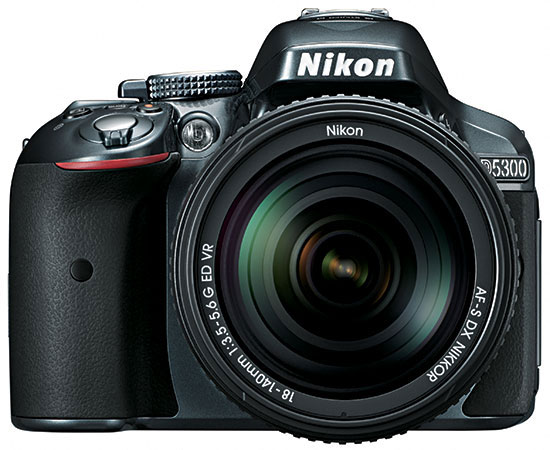
Nikon announced Nikon D5300 DSLR today, the camera features 24.1MP DX format CMOS sensor, same as NikonD7100 DSLR. The camera also comes without OLPF, other features include new Expeed 4 image processor and ISO expandable upto 25600. Take a look at the major features below
Nikon D5300 Major Features
- 24.1MP DX format CMOS sensor, without OLPF
- EXPEED 4 processing
- ISO 100-6400 standard, up to 25600 expanded
- 5 fps continuous shooting
- 39 point AF system, 9 sensors cross type
- 2016 pixel RGB metering sensor
- 1080p60 video recording, built-in stereo mic
- 1.04M dot 3.2″ vari-angle LCD monitor
- built-in wireless LAN (Wi-Fi®)
- GPS
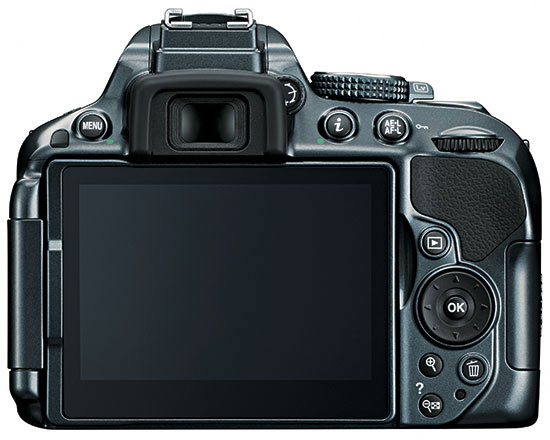 Nikon D5300 is Nikon first entry level model to come without AA filter, it will sure deliver super sharp images with high quality lenses. Nikon D5300 also comes with built in WiFi and GPS. The overall design is also smaller than Nikon D5200 DSLR . Nikon D5300 is Nikon first entry level model to come without AA filter, it will sure deliver super sharp images with high quality lenses. Nikon D5300 also comes with built in WiFi and GPS. The overall design is also smaller than Nikon D5200 DSLR .
Nikon D5300 Price –
$795 body only – Buy / Pre-order from Amazon | B&H
Store, $1399 with the 18-140mm lens
This post will be updated multiple times in the next few hours. Please refresh your browser for the latest version.
Nikon D5300 Press Release
The best image quality and definition in its class enabled by an effective pixel count of 24.2-million pixels, no optical low-pass filter, and the new EXPEED 4 image-processing engine.
An entry-level model equipped with a vari-angle monitor, and the first Nikon digital SLR camera to offer built-in Wi-Fi® and GPS functions.
TOKYO – Nikon Corporation is pleased to announce the release of the D5300, a Nikon DX-format digital SLR camera.
The D5300 is Nikon’s latest entry-level model. It offers an effective pixel count of 24.2-million pixels and is equipped with a Nikon DX-format CMOS sensor with no optical low-pass filter, as well as the new high-performance EXPEED 4 image-processing engine. It is Nikon’s first digital SLR camera to offer built-in wireless LAN (Wi-Fi®) and GPS functions, which enable simple sharing of high-quality images captured with the D5300 and NIKKOR lenses offering superior rendering performance via a smart device. These functions also allow users to look back on routes taken on vacation or with outdoor activities using a log feature that is part of the built-in GPS function.
The D5300 is also designed with a monocoque structure made of a new material that enables a smaller and lighter body while maintaining the necessary strength and durability. The camera is also equipped with a number of features that support various shooting situations, including a 3.2-inch, approximately 1037k-dot vari-angle monitor with wide viewing angle that enables flexible shooting from a variety of angles, a full-HD movie recording function that supports recording of smooth 1920 x 1080/60p movies, and a Special Effects mode with nine options that can be applied to photos and movies with shooting for a variety of creative effects.
D5300 Primary Features
- An effective pixel count of 24.2-million pixels and a Nikon DX-format CMOS sensor with no optical low-pass filter, as well as the latest image-processing engine, EXPEED 4, for the best image quality and definition in its class
The D5300 offers an effective pixel count of 24.2-million pixels and is equipped with a DX-format CMOS image sensor developed exclusively by Nikon. It supports a broad range of standard sensitivities, from ISO 100 to ISO 12800, as well as additional expansion up to ISO 25600 equivalent (Hi 1), for high-definition images exhibiting very little noise with shooting at a broad range of sensitivities. In addition, the latest image-processing engine, EXPEED 4, optimized to be even faster for high-performance digital SLR cameras, provides significantly better results with noise reduction (NR), auto white balance, color reproduction characteristics, and tone processing. What’s more, the absence of a low-pass filter maximizes the superior resolution of the high pixel count and rendering capabilities of NIKKOR lenses.
- Built-in Wi-Fi for transmitting high-quality images to a smart device for simple sharing
As Nikon’s first digital SLR camera equipped with a built-in Wi-Fi function, high-quality images with an effective pixel count of 24.2-million pixels captured from a variety of angles using the flexible vari-angle monitor can be transferred to a smart device for sharing with others*1. This expands the ways in which images are enjoyed after they are taken by enabling immediate image transfer for sharing photos with family and friends via blogs or social networking sites anytime, anywhere.
- Transfer function: Images captured by the D5300, or already saved to a memory card inserted in the D5300, can be transferred to a smart device over a wireless connection. Transferred images can be viewed in the smart device display, or uploaded to a blog or social networking site. In addition, the size at which images are transferred to a smart device can be selected from two options in accordance with smart device storage capacity.
- Manual upload function: Users can select images to be uploaded to a smart device using the D5300 monitor display. In situations or environments that do not sufficiently support immediate image upload, or when a smart device is not readily available, the camera can be used to specify images, and image file size, to be uploaded to the smart device at a later time.
- Remote shooting function: The D5300’s live view display is shown in the smart device display, enabling remote control over shooting. The camera’s live view shooting display is shown in the smart device display, allowing users to accurately frame photos and predict results with remote control over shooting*2.
- *1The Wireless Mobile Utility app must first be installed on the smart device (the app can be downloaded free of charge from the smart device’s app store).
- *2Effective only when AF-area mode is set to “Normal-area AF” or “Wide-area AF”.
- A built-in GPS function that records location data and tracks movement
The D5300 is Nikon’s first digital SLR camera with a built-in GPS function, enabling recording of location data (longitude, latitude, altitude) with images. Collaboration with ViewNX 2, NIKON IMAGE SPACE, and commercial mapping software enables display of images where they were captured on maps, as well as sharing of images with location data. What’s more, the A-GPS function makes detection of location data smoother. This capability allows users to look back on memories, or track their movement, on vacations or with outdoor activities by shooting location, and date and time of capture.
- A monocoque structure made of a new material for a smaller and lighter body that is strong and durable
The D5300 is designed with a monocoque structure utilizing a new material. As the camera cover and body are formed with a rigid, integrated structure, there are fewer joints. This enables a smaller and lighter camera with a width of 125 mm, height of 98 mm, and depth of 76 mm, and weighing just 530 g*, all while maintaining the necessary strength and durability.
- *Including battery and SD memory card; excluding body cap.
- A 3.2-in., 1037k-dot vari-angle LCD monitor with wide viewing angle for simple shooting from any angle
Adoption of a larger 3.2-inch, approximately 1037k-dot LCD monitor with wide viewing angle ensures a crisp, clear display. The side-hinged vari-angle monitor opens from 0 to 180° to the side, and can be rotated up to 90° clockwise and up to 180° counter-clockwise when it is open. This enables shooting from a wide variety of angles, from low to high, and making even self portraits possible.
- D-Movie function for recording full-HD 1920 x 1080 60p movies
The D5300 is equipped with a D-Movie function that supports recording of 1920 x 1080/60p movies. The combination of NIKKOR lenses, an effective pixel count of 24.2-million pixels, and the new EXPEED 4 image-processing engine provides movies with excellent resolution and very little in the way of noise, color aliasing, or moiré patterns. In addition, autofocusing during movie recording is possible using contrast-detect AF. When the focus mode is set to full-time-servo AF (AF-F) and AF-area mode is set to Subject-tracking AF, the camera automatically maintains focus on moving subjects. Manual movie settings are also available, allowing users to choose the desired shutter speed and ISO sensitivity in live view mode and with movie recording. Movie frame rate with full-HD recording can be selected from 24p, 25p, 30p, 50p, and 60p. In addition to recording of high-quality sound via the built-in stereo microphone, the optional Stereo Microphone ME-1 can also be used to record stereo sound.
- Toy Camera Effect and HDR Painting added to Special Effects mode (total of 9 effects) for more creative expression with still images and movies
The D5300 is equipped with a Special Effects mode, with which effects can be selected and applied with recording of both still images and movies. Preview in the camera monitor before shooting or recording begins allows users to confirm the results of effect selection in real time. Users can choose from a total of nine special effects, including the seven built into the D5200 (Selective Color, Color Sketch, Miniature Effect, Night Vision, Silhouette, High Key, Low Key), as well as the new Toy Camera Effect and HDR Painting*. This allows users to easily enjoy dramatic effects like those seen in art and the movies. This mode was adopted to respond to the creative intent of users searching for a way to express their own unique style and creativity.
- Toy Camera Effect: Create photos and movies in which colors have been changed and edges have been shaded so that they appear to have been recorded with a toy camera. Users can adjust the vividness and degree of vignetting (peripheral shading) from three options each to suit their individual preferences.
- HDR Painting*: The camera shoots two frames at different exposures and combines them, with processing that changes color tones, for HDR images with a painterly effect.
- *HDR Painting cannot be applied to movies. Further, results of the HDR Painting effect cannot be previewed in the camera monitor.
- Designed with a firm grip using just one hand and available in 3 colors, including a new gray option
The D5300 grip is designed to fit comfortably in the palm of the hand for a firm hold using just one hand, making framing via both the optical viewfinder and the monitor’s live view display easier. Further, in addition to the popular black and red colors, the D5300 is available in a new gray option. In addition, metal parts, such as the microphone cover and plate over the mode dial have a surface finish that gives the camera an elegant appearance.
Nikon D5300 Specifications
| Type of Camera |
Single-lens reflex digital camera |
| Lens Mount |
Nikon F bayonet mount |
| Effective angle of view |
Nikon DX format |
| Effective Pixels |
24.2 Million |
| Image Sensor |
23.5 × 15.6 mm CMOS sensor |
| Total Pixels |
24.78 million |
| Dust-Reduction System |
Image Sensor Cleaning, Airflow Control System, Image Dust Off reference data (optional Capture NX 2 software required) |
| Image Size (Pixels) |
6000 × 4000 (L), 4496 × 3000 (M), 2992 × 2000 (S) |
| File Format |
NEF (RAW): 14 bit, compressed
JPEG: JPEG-Baseline compliant with fine (approx. 1:4), normal (approx. 1:8) or basic (approx. 1:16) compression
NEF (RAW) + JPEG: Single photograph recorded in both NEF (RAW) and JPEG formats |
| Picture Control System |
Landscape, Monochrome, Neutral, Portrait, Standard, User-customizable Settings, Vivid |
| Storage Media |
SD (Secure Digital) and UHS-I compliant SDHC and SDXC memory cards |
| File System |
Compliant with DCF (Design Rule for Camera File System) 2.0
DPOF (Digital Print Order Format)
EXIF 2.3 (Exchangeable Image File Format for Digital Still Cameras |
| Viewfinder |
Eye-level pentamirror single-lens reflex viewfinder |
| Viewfinder Frame Coverage |
Approx. 95% horizontal and 95% vertical |
| Viewfinder Magnification |
Approx. 0.82x |
| Viewfinder Eyepoint |
18mm |
| Viewfinder Diopter Adjustment |
-1.7 to +0.7 m |
| Focusing Screen |
Type B BriteView Clear Matte Mark VII screen |
| Reflex Mirror |
Quick-return type |
| Lens Aperture |
Instant return, electronically controlled |
| Compatible Lenses |
Autofocus is available with AF-S and AF-I lenses; autofocus is not available with other type G and D lenses, AF lenses (IX NIKKOR and lenses for the F3AF are not supported),and AI-P lenses; non-CPU lenses can be used in mode M, but the camera exposure meter will not function The electronic rangefinder can be used with lenses that have a maximum aperture of f/5.6 or faster |
| Shutter type |
Electronically controlled vertical-travel focal-plane |
| Shutter Speed |
1/4000 to 30 s in steps of 1/3 or 1/2 EV, bulb, time (requires optional ML-L3 Remote Control) |
| Flash Sync Speed |
X=1/200 s; synchronizes with shutter at 1/200 s or slower |
| Release Modes |
Continuous low-speed [CL] mode; 1-3 frames per second
Continuous high-speed [CH] mode; 5 frames per second (JPEG and 12-bit NEF/RAW) or 4fps (14-bit NEF/RAW)
Single-frame [S] mode
Quiet Shutter Release
Self-timer mode
Mirror-up [Mup] mode
Interval timer photography supported |
| Top Continuous Shooting Speed |
5 fps |
| Self-timer |
2 s, 5 s, 10 s, 20 s; 1 to 9 exposures |
| Exposure Metering System |
TTL exposure metering using 2016-pixel RGB sensor |
| Metering Method |
Matrix: 3D color matrix metering II (type G and D lenses); color matrix metering II (other CPU lenses); Center-weighted: Weight of 75% given to 8-mm circle in center of frame; Spot: Meters 3.5-mm circle (about 2.5% of frame) centered on selected focus point |
| Metering Range |
0 to 20 EV (3D color matrix or center-weighted metering)
2 to 20 EV (spot metering) |
| Exposure Meter Coupling |
CPU |
| Exposure Modes |
Auto modes (auto; auto [flash off]); programmed auto with flexible program (); shutter-priority auto (); aperture-priority auto (); manual (); scene modes |
| Scene Modes |
Autumn Colors
Beach / Snow
Blossom
Candlelight
Child
Close-up
Dusk / Dawn
FoodLandscape
Night Landscape
Night Portrait
Party / Indoor
Pet Portrait
Portrait
Sports Sunset
Special Effects Mode (Night vision, Color sketch, Toy camera, Miniature effect, Selective color, Silhouette, High key, Low key, HDR painting) |
| Exposure Compensation |
±5 EV in increments of 1/3 or 1/2 EV |
| Exposure Bracketing |
3 frames in steps of 1/3, 1/2, 2/3, 1, 2, or 3 EV |
| Exposure Lock |
Yes |
| Mirror Lock Up |
Yes |
| ISO Sensitivity |
ISO 100 – 12,800
Hi-1 (ISO 25,600) |
| High ISO Noise Reduction |
Low
Normal
High
Off |
| Active D-Lighting |
Auto, extra high, high, normal, low, off |
| D-Lighting Bracketing |
2-3 frames
2 frames using selected value for one frame or 3 frames using preset values for all frames |
| Autofocus System |
Nikon Multi-CAM 4800DX autofocus sensor module with TTL phase detection, 39 focus points (including 9 cross-type sensors), and AF-assist illuminator (range approx. 0.5 to 3 m/1 ft 8 in. to 9 ft 10 in.) |
| Detection range |
-1 to +19 EV (ISO 100, 20°C/68°F) |
| Lesn Servo |
Autofocus (AF): Single-servo AF (AF-S); continuous-servo AF (AF-C); auto AF-S/AFC selection (AF-A); predictive focus tracking activated automatically according to subject status
Manual focus (M): Electronic rangefinder can be used |
| Focus Point |
Can be selected from 39 or 11 focus points |
| AF-area modes |
Single-point AF, 9-, 21- or 39-point dynamic-area AF, 3D-tracking, auto-area AF |
| Focus lock |
Focus can be locked by pressing shutter-release button halfway (single-servo AF) or by pressing button |
| Built-in Flash |
Yes |
| Guide Number |
Approx. 39/12, 43/13 with manual flash (ft/m, ISO 100, 68°F/20°C) |
| Flash Control |
TTL: i-TTL flash control using 2016-pixel RGB sensor is available with built-in flash and SB-910, SB-900, SB-800, SB-700, SB-600, SB-400 or SB-300; i-TTL balanced fill-flash for digital SLR is used with matrix and center-weighted metering, standard i-TTL flash for digital SLR with spot metering |
| Flash Modes |
Auto, auto with red-eye reduction, auto slow sync, auto slow sync with red-eye reduction, fill-flash, red-eye reduction, slow sync, slow sync with red-eye reduction, rear-curtain with slow sync, rear-curtain sync, off |
| Flash Compensation |
-3 to +1 EV in increments of 1/3 EV |
| Flash-ready indicator |
Lights when built-in flash or optional flash unit is fully charged; flashes after flash is fired at full output |
| Accessory Shoe |
Yes with sync and data contacts and safety lock |
| Nikon Creative Lighting System (CLS) |
Advanced Wireless Lighting supported with SB-910, SB-900, SB-800 or SB-700 as a master flash or SU-800 as commander; Flash Color Information Communication supported with all CLS-compatible flash units |
| White Balance |
Auto, incandescent, fluorescent (7 types), direct sunlight, flash, cloudy, shade, preset manual, all except preset manual with fine-tuning |
| White Balance Bracketing |
3 shots in steps of 1 |
| Live View Shooting |
Photography Live View Mode
Movie Live View Mode |
| Live View Lens servo |
Autofocus (AF): Single-servo AF (AF-S); full-time-servo AF (AF-F); Manual focus (M) |
| Life View AF-area mode |
Face-priority AF, wide-area AF, normal-area AF, subject-tracking AF |
| Live View Scene Auto Selector |
Auto mode |
| Movie Metering |
TTL exposure metering using main image sensor
Metering method Matrix |
| Movie Frame size (pixels) and frame rate |
1920 x 1080, 60i (59.94 fields/s)/50i (50 fields/s)*, high/normal
1920 x 1080, 30p (progressive)/25p/24p, high/normal
1280 x 720, 60p/50p, high/normal
640 x 424, 30p/25p, high/normal |
| Movie File Format |
MOV |
| Movie Video Compression |
H.264/MPEG-4 Advanced Video Coding |
| Movie Audio |
Built-in stereo microphone
External stereo microphone (optional)
Microphone sensitivity can be adjusted |
| Audio Maximum length |
29 min. 59 s (3 min. in miniature effect mode) |
| Audio ISO sensitivity |
ISO 100 to 6400; can also be set to approx. 0.3, 0.7, 1, or 2 EV (ISO 25600 equivalent) above ISO 6400 |
| Monitor Size |
Super Density 3.2 in. diagonal |
| Monitor Resolution |
1,037,000 dots |
| Monitor Angle of View |
170-degree wide-viewing angle |
| Monitor Adjustments |
Brightness, 7 levels |
| Playback Functions |
Full-frame and thumbnail (4, 9, or 72 images or calendar) playback with playback zoom, movie playback, photo and/or movie slide shows, histogram display, highlights, auto image rotation, and image comment (up to 36 characters |
| Interface |
Hi-speed USB
Accessory Terminal: Remote Cord: MC-DC2 (available separately); GPS unit: GP-1, GP-1A (available separately)
HDMI Output: Type C mini-pin HDMI connector
Stereo Microphone Input
WR-1 and WR-R10 Wireless Remote Controller (available separately) |
| Wi-Fi Functionality |
Yes, built-in (IEEE 802.11b, IEEE 802.11g |
| GPS |
GP-1 GPS unit
GP-1A GPS unit
H1202 GPS Unit |
| Video output |
NTSC, PAL |
| Supported languages |
Arabic, Chinese (Simplified and Traditional), Czech, Danish, Dutch, English, Finnish, French, German, Greek, Hindi, Hungarian, Indonesian, Italian, Japanese, Korean, Norwegian, Polish, Portuguese (Portugal and Brazil), Romanian, Russian, Spanish, Swedish, Thai, Turkish, Ukrainian |
| Battery |
One EN-EL14a Rechargeable Li-ion Battery |
| Battery Life (shots per charge) |
600 shots per charge (Battery Life) (CIPA) |
| AC adapter |
EH-5b AC Adapter; requires EP-5A Power Connector (available separately) |
| Tripod socket |
1/4 in. (ISO 1222) |
| Dimensions (W x H x D) |
Approx. 125 x 98 x 76 mm/4.9 x 3.9 x 3.0 in. |
| Weight |
Approx. 16.9 oz (480g) (camera body only) |
| Temperature |
0 to 40°C/32 to 104°F |
| Humidity |
85% or less (no condensation) |
By admin, on October 16th, 2013
According to latest rumors surfaced over the Web Nikon is ready to announce Nikon D5300 DSLR with Nikon AF-S NIKKOR 58mm f/1.4G Lens tonight.
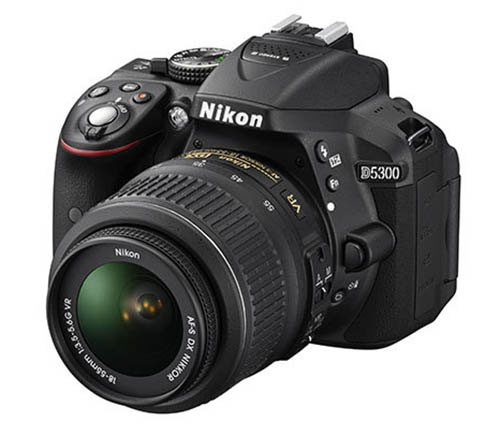
The Nikon D5300 will feature same sensor as Nikon D7100 DSLR camera and possibly no optical low-pass filter, Take a look at the major specification leaked below
24MP Same sensor as in the D7100 (no OLPF)
39 AF points (9 cross points)3
5 fps (same as the D5200)
EXPEED 4
Built-in Wi-Fi
Built-in GPS
3.2″ vari-angle LCD monitor
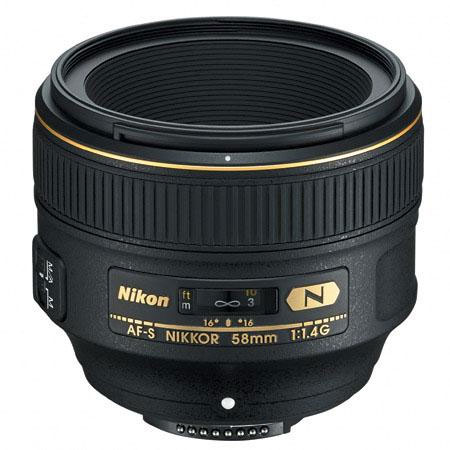
Other major announcement today is AF-S NIKKOR 58mm f/1.4G lens, the lens features Nano Crystal Coating and comes with improved optics.
STAY WITH ON FACEBOOK | TWITTER | GOOGLE+ to get live news + Nikon rumors 24X7.
src-digicame-info
|
KEEP THIS BLOG ALIVE - Support New Camera Buy Canon Lenses, Buy Music CD or Digital Camera at amazon it helps this site, and you do not pay anything extra, it is just a way to help support this site.

|
















